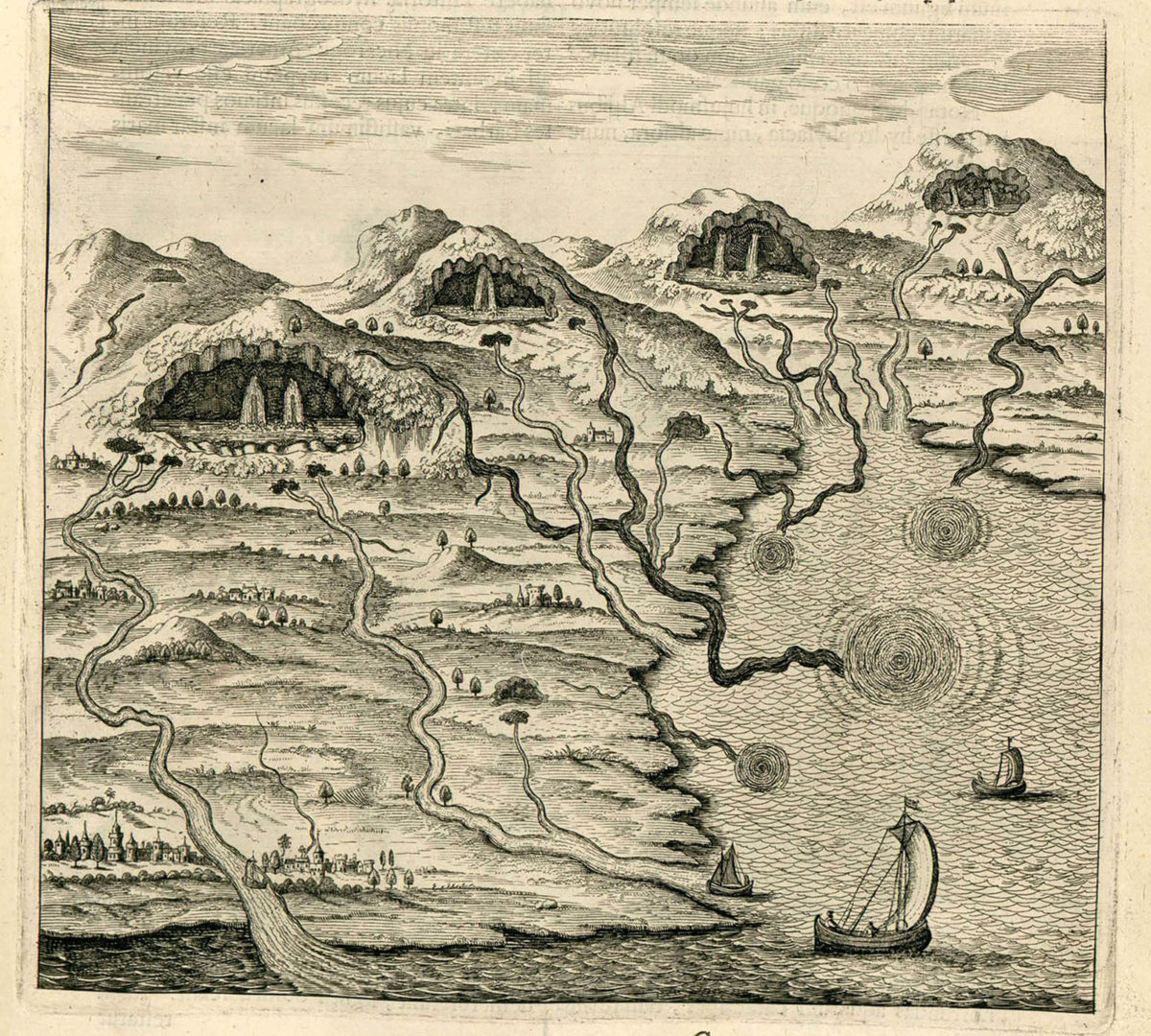Provisionally Invisible: Depicting the Margins of the Known

by Yara Saqfalhait (MDes ’19)
In his preface to the second volume of Mundus Subterraneus (1665), a 17thcentury two-volume atlas of the subterranean world, Athanasius Kircher promises his readers to make the most profound depths of the Earth visible ‘by means of a sharp penetration of the eyes’1. Consequently, the following pages of the book are populated by lavishly illustrated depictions of natural phenomena that range from volcanic eruptions to underground springs and channels, in addition to machines and instruments that replicate natural processes which could not be directly observed otherwise, like the formation of metals and magnetic attraction. The German scholar’s work was cast by some of his later biographers as an anachronism amidst the rising scientific empiricism of the 17thcentury, mainly due to the speculative nature of its claims and the irreproducibility of its experiments.
This thesis seeks to investigate the function of the pictorial representations employed by Kircher in Mundus Subterraneus, in relation to the changing intellectual and institutional contexts, ways of seeing, belief systems, forms of knowledge, scientific practices and colonial expansion of mid-seventeenth century Europe. Looking first at the wider economy of images circulating through the works of naturalists in seventeenth century Europe, this thesis provides a reading of Kircher’s illustrations against the backdrop of the epistemological status of scientific images of their time. It turns next to considering Kircher’s investigation of the subterranean world – and other realms that reside beyond and below the threshold of unaided human vision – in light of the transformation of the relationship between vision and cognition instigated by the introduction of optical instruments like the telescope and the microscope at the beginning of the seventeenth century, and the ensuing change in the conception of scientific fact, evidence and explanation. Changes within which Mundus Subterraneuswas deeply embedded, and it is in connection to which that its ambitions and shortcomings should be considered.
1Kircher, Athanasius. Mundus Subterraneus, in XII Libros Digestus. Vol.II, 1st ed. Amsterdam: Joannem Janssonium & Elizium Wegerstraten, 1665, p. ii.

